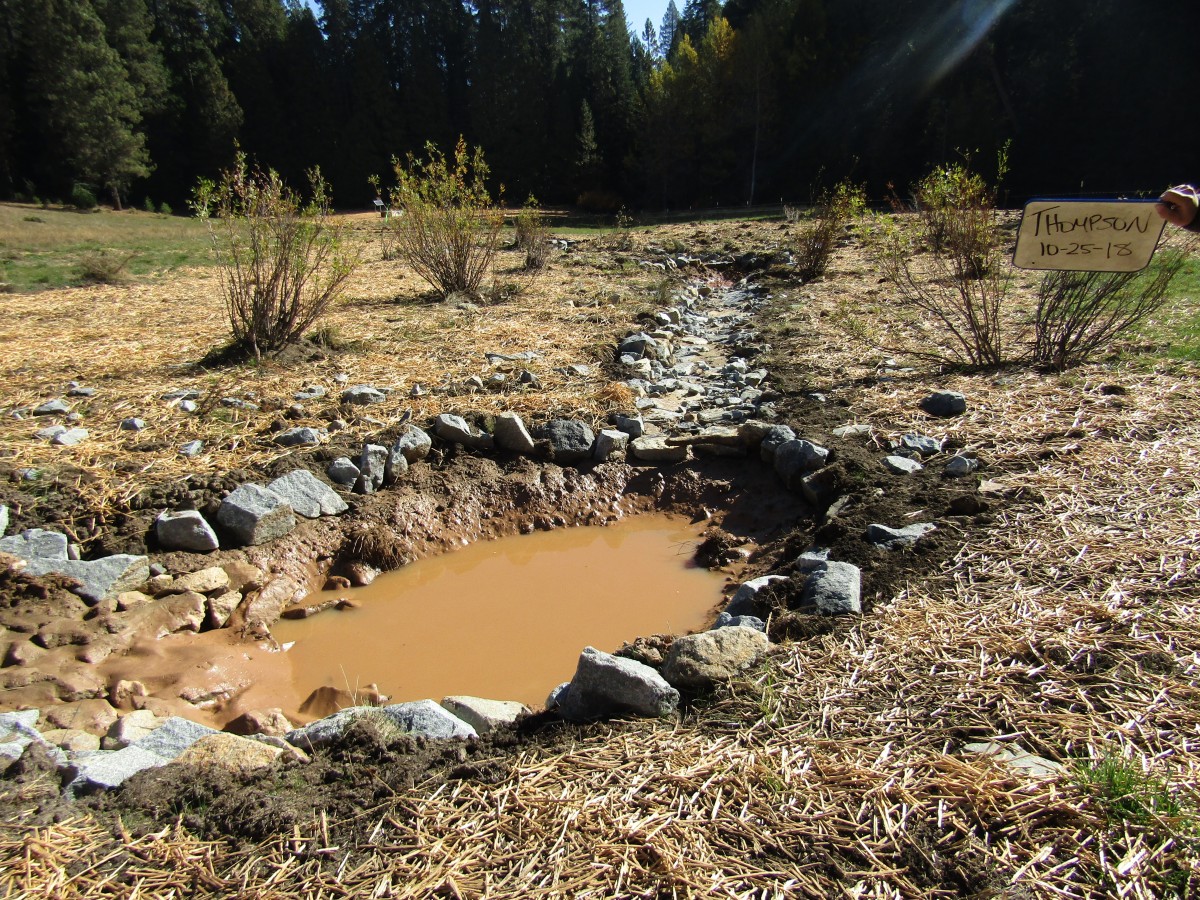Those who spend time out in the local forest may have noticed a number of meadow restoration projects that have been underway this year. Twenty meadows (totaling 157 acres) have been or are in the process of being restored. The work includes streambank armoring, head-cut stabilization, native seed dispersal, invasive plant removal, removal of encroaching conifers, and the installation of wildlife-friendly cattle troughs to reduce livestock impacts to streambanks.
CSERC staff visited a number of the meadow restoration projects this fall to monitor their status. The work that’s been done at Thompson Meadow is one example of highly impressive restoration treatments that will hopefully provide benefits for many years. Work done at Wet Meadow Springs also was sorely needed. In contrast, the restoration treatments completed last fall at Lower Fahey Meadow ended up being gouged out by unexpectedly high winter run-off that surged through the meadow. In addition to the gouged-out stream channel, the restored meadow itself ended up being severely pocked by cattle this summer because the temporary electric fence was not operational. As a result, cattle concentrated for many weeks in the restoration area. The meadow was severely trampled and torn up, and the meadow’s vulnerable streambanks were degraded.
When truly significant amounts of taxpayer dollars or grant funds are spent to restore meadows and riparian areas, CSERC has repeatedly urged the Forest Service to fence out livestock for at least 5 years (or more if recovery takes longer). As CSERC staff does our watchdog monitoring, we are enthusiastic when we find successful meadow restoration treatments. It is our hope that the Forest staff will keep restoration areas protected as long as necessary so that the money spent is not wasted.



